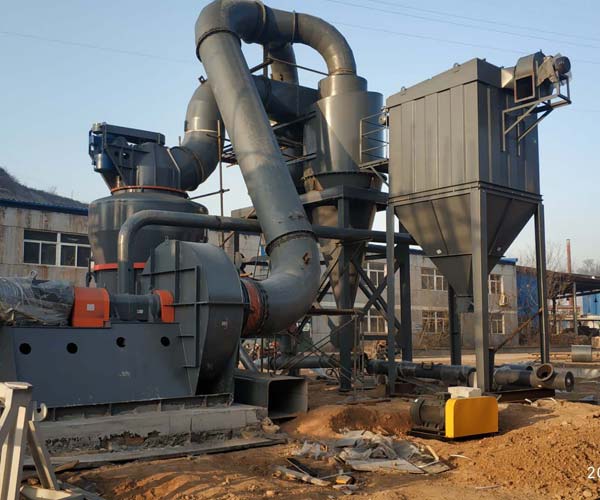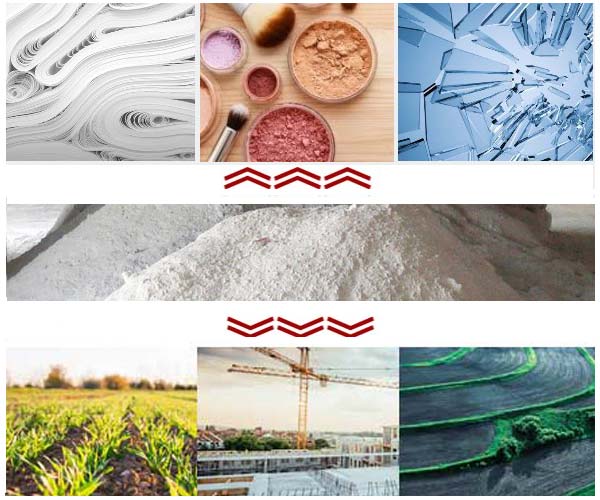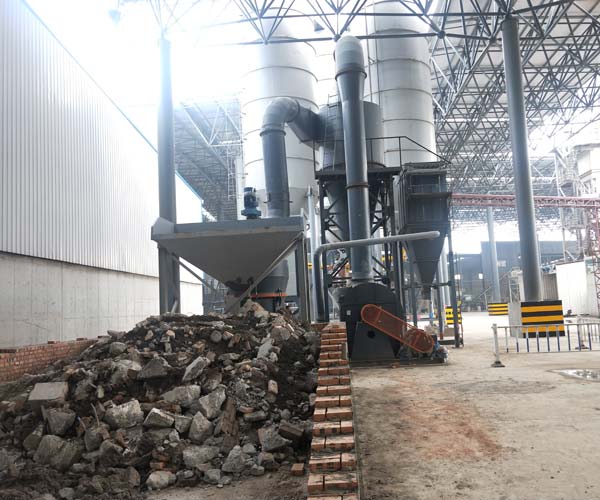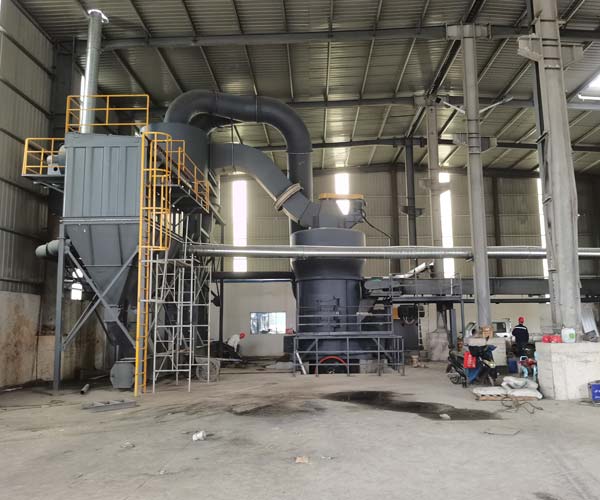
Grinding mill lines play a crucial role in limestone powder production. By utilizing crushers, ball mills, vertical mills, and air classifiers, these lines transform raw limestone into fine powder particles with precise particle size distribution, enhanced fineness, and superior quality.
24 Online Service

One of the most significant products derived from limestone is limestone powder. This finely ground powder, obtained through the pulverization of limestone, possesses numerous applications across various industries.
Limestone powder is typically produced by grinding limestone rocks into a fine powder form. The primary component of limestone powder is calcium carbonate (CaCO3), which lends it several unique properties. With a Mohs hardness scale rating of 3, limestone powder falls into the category of a soft to medium-hard material.
The production process involves quarrying limestone from natural deposits and subjecting it to crushing and grinding processes to achieve the desired particle size. High-quality limestone powder is produced by carefully controlling the grinding process to ensure uniformity and consistency in the particle size distribution. The resulting powder ranges from a fine dust-like texture to a granular form, depending on the specific application requirements.
Limestone powder plays a crucial role in the construction industry. It is widely used as a filler material in the production of concrete and cement, enhancing their strength and durability. Additionally, limestone powder acts as a binding agent in mortar, preventing cracking and improving workability. It is also employed in the manufacturing of asphalt for road construction, providing stability and resistance to wear and tear.
Limestone powder finds extensive use in agriculture and horticulture. As a soil conditioner, it helps neutralize acidic soils by raising the pH level, promoting better plant growth and nutrient absorption. Limestone powder is also utilized as a supplement for animal feed, providing essential calcium for livestock and poultry. Furthermore, it can be applied in horticulture as a agent to maintain optimal soil conditions for plant growth.
Limestone powder is valued for its environmental applications. It is used as a scrubbing agent in flue gas desulfurization (FGD) systems to remove sulfur dioxide (SO2) emissions from power plants and industrial facilities, mitigating air pollution. The alkaline properties of limestone powder neutralize acidic wastewater, making it an effective treatment agent for water purification processes.
Various industries benefit from the versatility of limestone powder. In the manufacturing sector, it is employed in the production of glass, ceramics, and paints, providing essential minerals and enhancing product performance. Limestone powder also serves as a filler in rubber and plastic manufacturing, improving their mechanical properties and reducing costs.
The paper and pulp industry extensively uses limestone powder as a coating material. It enhances the smoothness, brightness, and opacity of paper, resulting in improved print quality. Additionally, limestone powder acts as a filler in paper manufacturing, reducing costs and increasing paper strength.
Limestone powder is widely utilized in the creation of decorative elements, such as statues, ornaments, and architectural facades. Its ability to be molded into intricate shapes and its aesthetic appeal make it a popular choice for artisans and architects alike.

Limestone, a versatile sedimentary rock, holds immense importance across various industries. One of its most valuable applications lies in its conversion into limestone powder. Limestone powder finds extensive utilization in industries such as construction, agriculture, pharmaceuticals, and more. However, the production of high-quality limestone powder requires the utilization of efficient grinding mill lines.
Limestone powder production involves the transformation of raw limestone into fine powder particles through a series of processes. The initial step typically involves quarrying limestone from natural deposits. This raw material is then crushed into smaller fragments and transported to grinding mill lines for further processing. Grinding mill lines consist of various equipment and machinery designed to reduce the size of limestone particles and enhance their fineness.
Grinding mill lines encompass a range of equipment, each serving a specific purpose in the limestone powder production process. The primary components include crushers, ball mills, vertical mills, and air classifiers. Let us delve into their functionalities:
Crushers play a vital role in the initial stage of limestone powder production. They reduce the size of raw limestone fragments into smaller, manageable pieces. Various types of crushers, such as jaw crushers and impact crushers, are employed depending on the required particle size and production capacity.
Ball mills are commonly used grinding mills that employ rotating cylinders filled with steel balls. As the limestone fragments enter the ball mill, the grinding media crushes them into fine powder particles through the process of impact and attrition. Ball mills are effective in achieving high grinding efficiency and producing limestone powder with a narrow particle size distribution.
Vertical mills are another type of grinding mill used in limestone powder production. These mills consist of a vertical spindle on which grinding rollers are mounted. As the limestone enters the vertical mill, the rollers exert significant pressure, grinding the limestone into smaller particles. Vertical mills offer advantages such as low energy consumption, precise control over particle size, and the ability to produce ultra-fine limestone powder.
Air classifiers are crucial in the final stage of limestone powder production, where they separate fine particles from coarser ones. Air classifiers use centrifugal forces and airflow to segregate particles based on their size and density. This process ensures that only particles within the desired size range are collected as high-quality limestone powder, while the larger particles are returned to the grinding mill for further processing.
The particle size distribution of limestone powder is of utmost importance in determining its suitability for various applications. Grinding mill lines allow precise control over particle size by adjusting parameters such as grinding time, mill speed, and the size of grinding media. Achieving a consistent particle size distribution ensures that the limestone powder meets specific industry requirements.
Grinding mill lines are instrumental in enhancing the fineness and surface area of limestone powder. Finer particles and increased surface area improve the reactivity and solubility of limestone powder in applications such as soil improvement, cement production, and flue gas desulfurization. Grinding mill lines enable the production of limestone powder with high fineness and increased surface area, enhancing its effectiveness in diverse industries.
The quality of limestone powder directly impacts its performance and usability in different applications. Grinding mill lines, with their ability to produce consistent and high-quality limestone powder, ensure that the final product meets the required specifications. Factors such as uniform particle size, absence of impurities, and controlled moisture content contribute to the overall quality of the limestone powder.

Grinding is a vital manufacturing process that plays a significant role in various industries, including automotive, aerospace, construction, and more. It involves removing material from a workpiece using abrasion to achieve precise dimensions, smooth surfaces, and desired finishes.
To comprehend the intricacies of grinding, one must first grasp the fundamental aspects of the grinding process. Grinding primarily involves the interaction between the grinding wheel and the workpiece, aided by various parameters. Let’s explore the key stages involved in the grinding process:
Before grinding commences, it is crucial to properly prepare the workpiece. This may involve cleaning, de-burring, or any necessary machining to ensure an optimal surface for grinding.
Selecting the right grinding wheel is paramount for achieving desired results. Factors such as material compatibility, grit size, bonding material, and wheel hardness must be considered.
Proper machine setup is essential for achieving precise and consistent grinding results. This includes adjusting spindle speed, wheel truing, dressing, and aligning the workpiece with the grinding wheel.
During the grinding operation, the wheel makes contact with the workpiece, removing material through abrasion. Parameters such as feed rate, depth of cut, and coolant application need to be optimized to prevent thermal damage, ensure surface finish, and control dimensional accuracy.
Grinding techniques can significantly impact the outcome of a grinding operation. Here are some key techniques employed to enhance grinding efficiency and achieve superior results:
Surface grinding involves grinding flat surfaces to achieve a high degree of surface finish and parallelism. Techniques such as reciprocating grinding, plunge grinding, and creep feed grinding are commonly used for surface grinding applications.
Cylindrical grinding focuses on grinding the outer surface of cylindrical workpieces. Techniques like centerless grinding, plunge grinding, and traverse grinding are employed to achieve precise dimensions, roundness, and surface finishes.
Internal grinding refers to grinding the inner surfaces of holes or bores. This technique is utilized to achieve high accuracy, tight tolerances, and surface finishes in components such as bearings, valves, and hydraulic cylinders.
Tool and cutter grinding is employed for the sharpening and manufacturing of cutting tools. It involves intricate grinding techniques to produce tools with precise geometries, rake angles, and cutting edges.
Several factors can influence grinding performance and the quality of the final product. Understanding these factors is vital for optimizing grinding processes. Here are some significant factors to consider:
Choosing the appropriate grinding wheel and maintaining its condition through dressing and truing operations is crucial for achieving desired results.
The application of coolants and lubricants helps dissipate heat, reduce friction, flush away grinding debris, and improve surface finishes.
Different materials exhibit varying grinding characteristics. Understanding the workpiece material properties and hardness allows for appropriate wheel selection and optimal grinding parameters.
The rigidity and stability of the grinding machine directly impact the precision and accuracy of the grinding process. Proper maintenance and calibration are essential for consistent results.
If you are interested in Zenith Limestone Powder Grinding Mill Line, you can contact us for more information about the selection, the price and other details of the equipment. The engineers will introduce the machines in detail for you.
Our Projects
Copyright © ZENITH, All Right Reserved.
